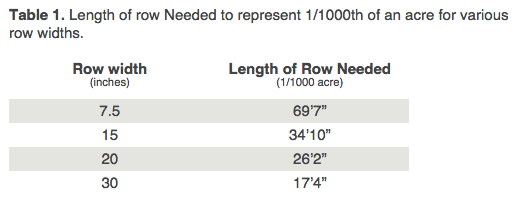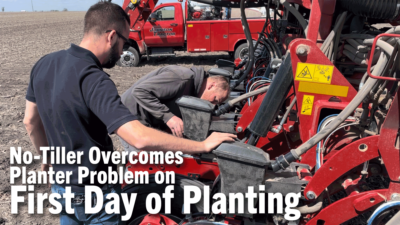Source: South Dakota State University Extension
Abnormally dry conditions in portions of the state may compel growers to reconsider planting depth for soybeans. While some areas have received much-needed moisture, outlooks still indicate dry soil conditions could be a concern.
Soybeans must absorb nearly 50% of their seed weight in water before the germination process can begin. As a result, planting into soil with inadequate moisture may result in reduced or delayed emergence, which can affect final plant stands.
Proper Planting Depth
The typical recommended planting depth for soybeans is 1-1-½ inches. As a general rule, growers should try to plant into at least a half inch of moisture. This may be a challenge in many of the soybean producing areas of South Dakota in 2015.
In dry soil conditions, planting depths of up to 2 inches are acceptable. Planting deeper than 2 inches places the soybean seed at risk of running out of carbohydrate reserves prior to emergence, especially if a heavy rain crusts the soil surface.
Coarse-textured soils and soils with a large amount of residue cover are less susceptible to crusting than bare, fine-textured soils. As always, growers should consider soil texture, tillage practices and weather forecasts when determining optimum planting depth.
Equipment Considerations
Row-crop planters often provide better depth control than air seeders or drills, although this depends a lot on the amount of residue present in the field. Another advantage of row-crop planters in dry conditions is the ability to use residue managers to move loose, dry soil away from the planting strip, essentially creating a ‘furrow,’ which may allow for seed placement deeper into the soil profile while still only having 2 inches of soil on top of the soybean seed. Growers should consider that weather events such as high winds or heavy rain and even common production practices such as using a land roller may partially fill in the ‘furrow’ and result in a larger than intended depth of soil on top of the soybean seed.
Uneven Emergence
In many cases, despite the best precautions, soybean emergence may be uneven this year. Growers should evaluate both the cause for uneven emergence and the uniformity and density of stand before considering replanting. If seeds are whole and laying in dry soil, they will eventually germinate and fill in the stand when adequate moisture arrives. Final stand counts should not be performed until all viable seed has emerged.
Soybean maturity is largely determined by photoperiod and late-emerging plants will be ready for harvest at the same time as early-emerging plants. Most research suggests that a uniform final stand of 80-100,000 plants per acre is enough to obtain expected yields. Growers can determine their stand by counting the number of plants in a length of row equal to 1/1,000th of an acre (Table 1) and multiplying by 1,000.
Second Plantings
If final stands are less than 80,000 or there are several bare spots in a field, a grower may want to ‘fill-in’ these areas with a row-crop planter. Keep in mind that adequate moisture must be present for these ‘fill-in’ soybeans to germinate and that the existing stand will be damaged by this process. The second planting will also have lower yield potential due to a later planting date. South Dakota State University research suggests that ‘filling-in’ does not increase yields over leaving existing stands if there are more than 66,000 plants per acre.






Post a comment
Report Abusive Comment